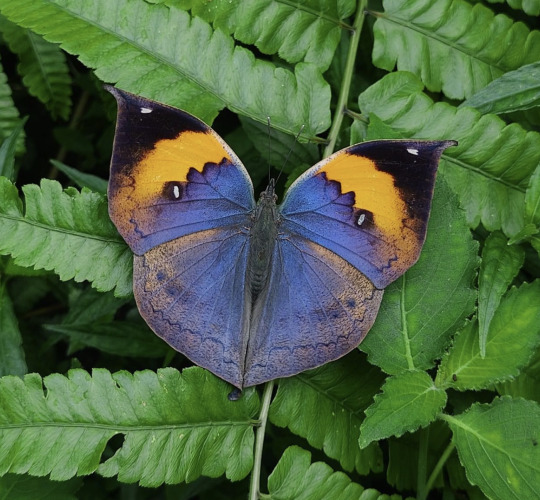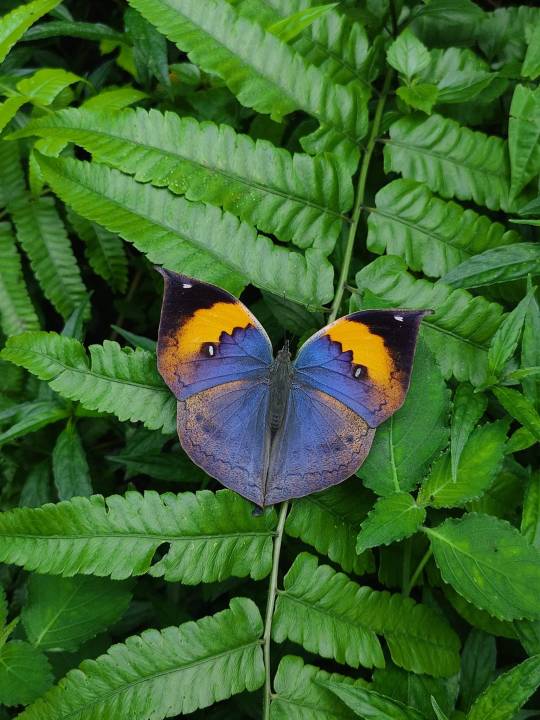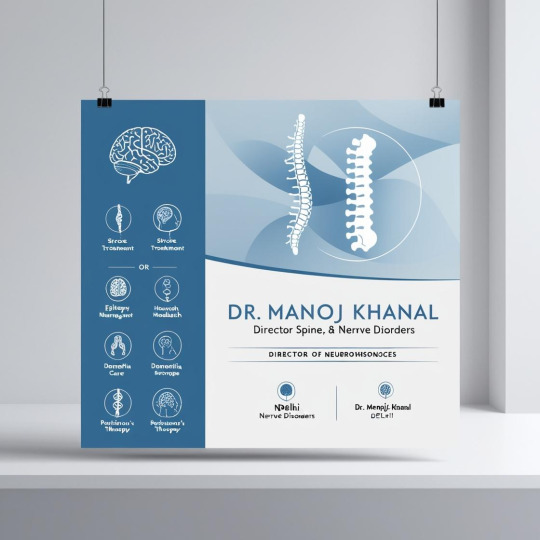#khanally
Explore tagged Tumblr posts
Text

(And also, this applies to any other fandom)
#sonic the hedgehog#sonic#sonic comics#archie sonic#sonadow#sonally#sonamy#sonaze#sonilver#silvaze#knuxouge#knuxulie#knuxonic#sonic prime#teknamy#blazamy#sonic the comic#sonic idw#whispangle#sonangle#silvisper#shadamy#shadilver#sallicole#salamy#khanally
2K notes
·
View notes
Text
KHANALLY FANKID

#sally acorn#monkey khan#sonic the hedgehog#sonic fanart#my art#oc#artists on tumblr#digital art#drawing#khallyacorn#khanally#archie sonic#archie comics
16 notes
·
View notes
Text

Nicole and Khan cheering on for ( their girlfriend ) Sally.
4 notes
·
View notes
Text
Ok, Ngl, the Sally Acorn x Monkey Khan mini romance was pretty sweet, I was a little disappointed when they parted ways. I might add this to my ship list.
2 notes
·
View notes
Text

Jeanne y Adam Acorn 💙❤️
6 notes
·
View notes
Text

Sahaana 🔥
my new landlord, isn't she the cutest?
103 notes
·
View notes
Text

Prajakta-Vrishank Wedding: प्राजक्ता कोली और वृषांक कनल ने लिए सात फेरे, देखें शादी की तस्वीरें
#Prajakta-vrishank wedding#prajakta-vrishank marriage#prajakta koli#vrishank khanal#prajakta-vrishank wedding ceremony#prajakta-vrishank wedding pictures#entertainment news in hindi#प्राजक्ता कोली#वृषांक कनल#newswatch india#today bollywood news#trending news today#Trending News Live Today March 3
0 notes
Text
अभिनय गर्दा गर्दै मर्न पाए हुन्थ्यो भन्ने लाग्थ्यो
youtube
View On WordPress
0 notes
Text
Actress & Youtuber Prajakta Koli Got Engaged To Her Longtime Beau Vrishank Khanal And Left Fans Ecstatic. Stay Tuned To ShaadiWish For Latest Trends And Ideas.
#engagement#influencer#Influencer Proposal#MostlySane#Prajakta And Vrishank#Prajakta Koli#Prajakta Koli Engagement#Prajakta Koli Proposal#Proposal#Proposal Ideas#Vrishank Khanal#Youtuber#shaadiwish
0 notes
Text
It was about time to redo this tier list, so here we go;



#sonic the hedgehog#sonic#sonadow#sonic comics#sonic ships#sth fandom#sth#sonjet#sonally#knuxulie#knuxouge#knuxonic#sallicole#khanally#mephinite#silvaze#stobotnik#sonmina#whispangle#teknamy#blazamy#shardicole#lightdator#buntoine#tier list#sonic fandom#Sergeant Simian X Barby Koala#sonic media
77 notes
·
View notes
Text

Orange Oak Leaf (Kallima inachus), family Nymphalidae, Institute of Forestry, Pokhara, Nepal
Photograph by Arpana Khanal
592 notes
·
View notes
Text


Posting screenshots of the one sonic cartoon with the most focus on environmentalism isn't helping ur case.
And this is why i cant stand most sally fans because they dont actually like sally the character, they like the IDEA of her. They see her compelling when she's shipped with sonic. They don't care about other potential ships like Knuxally or Khanally, & heaven forbid you pair with another girl!! Nope she's just an extension of Sonic!
What's ironic is, if Sally had came out today, these same fans would accuse her of being too woke because she isn't hyperfeminine, she's bossy, has the Mean Lesbian Haircut whatever. But since she's from an old cartoon she has that nostalgia factor protecting her. And well, they think because she was his first "true" love that should be her only trait. Yuck!
So, this one tweet shows the real goal behind these Rally 4 Sally types. Not actually want to bring her back because she could bring something new to the table or given better writing than what she had. They want her back so they can make their self insert fantasies complete.
26 notes
·
View notes
Text
The Karakhanid Khanate: Part 1: Origins, Culture and Economy

Tash Rabat. Wikipedia (user: Firespeaker)
The Sources
Researching the Karakhanid Khanate poses several challenges. Source material is scarce and, in some cases, has been proven to be entirely unreliable. To date, almost no internal sources from the Karakhanid Khanate have been found. Contemporary historical accounts of the Karakhanids seem to have existed but are now lost to the ravages of time save a few fragments. Information therefore has to be gathered from historical works about neighboring dynasties or general histories.
An important source is the fourteenth-century historian Jamal Qarshī. Another source is the book “Tazkirat al-bughra”, although a lot of its stories are nothing more than fancy make-belief. Omeljan Pritsak and Vasily Bartold's works on the Karakhanids remain the most reliable modern accounts of the khanate to this day. In recent decades, numismatics has emerged as an invaluable resource for understanding Karakhanid political history. The study of coinage has enabled scholars to reconstruct a reasonably comprehensive list of Karakhanid rulers and even appanage-holders. An important contributor in the studies of Karakhanid money has been Boris Dimitrievich Kochnev. Archeological surveys have also compensated the lack of written sources to a great extent.
Origins
The Karakhanids ruled over a confederation of Turkic tribes formed in the 9th century CE. The term Karakhanid derives from Karakhan or Qara Khan, which literally means “black” or “courageous ruler”—a title that appears on the dynasty's coinage. Other attested titles include Qara Khāqān and Ilak-Khanid (or Ilek Khan), the latter deriving from a term used to denote nobility within the khanate. In contemporary sources, the Karakhanids were also referred to as Kāqāniya (the Kāqān house), al-Mulūk al-Kāniya al-Atrāk (the Khanal kings of the Turks), and Āl-e Afrāsiāb (the house of Afrāsiāb, or the kings of Turān in the Shahnameh).
The exact ethnic origins of the Karakhanids remain unclear. It is generally believed that they emerged from a confederation of several Turkic tribes, including the Karluks, an ethnically distinct Turkic group. Possible connections with the Uyghurs have also been suggested, as both groups originated from the same region. Additionally, the Karakhanid titles bugra and gongtuo, both meaning “ruler,” are derived from the Yagma tribe. However, the precise ethnic identity of the Karakhanid rulers themselves remains uncertain.
The Karakhanids originally lived in the China-Mongolia border region before being pushed westward into what is now the Chinese province of Xinjiang. The Turkic tribes in this area eventually split into two groups. One group, the Uyghurs, remained in Xinjiang and developed a distinct culture centered on the Uyghur language. This language was initially written using the Old Aramaic script, which they adopted from local Nestorian Christian merchants. Meanwhile, the Karakhanids continued migrating westward, eventually reaching the border of the Islamic Samanid Emirate around 850 CE. Around the city of Kashgar—now one of the westernmost cities in China—the Karakhanids established an independent khanate. Remarkably durable, the Karakhanid Khanate lasted until 1212. At its height, the dynasty ruled a vast territory in Central Asia, stretching from the Oxus River (Amu Darya) to the Tarim Basin.

Map of the Karakhanid Khanate. Wikipedia
From the outset, the Karakhanids faced a challenge common to many Turkic and Islamic states: the absence of primogeniture. Among the Turkic tribes of Central Asia, the concept of succession by the eldest son was unknown. As a result, all the sons of a khan typically demanded a share of the inheritance. This practice of partitioning power continuously undermined the cohesion of the Karakhanid state. By the mid-11th century, there were as many as four separate Karakhanid capitals across Central Asia.
Islamization
Like most Turkic peoples in Central Asia at the time, the Karluks—ancestors of the Karakhanids (cf. supra)—were primarily adherents of Tengrism, a steppe-origin religion rooted in animism and shamanism. The Karakhanids later adopted Buddhism before ultimately converting to Sunni Islam in the 950s, making the Karakhanid Khanate the first Turkic Islamic state in history. Following their conversion, they began persecuting Buddhists within their realm as idol-worshippers, although most other religious groups were largely left in peace.
Frederick Starr suggests that the Karakhanids' conversion may have been motivated by their increasingly sedentary lifestyle, with Islam seen as a religion more suited to urban populations. He concedes, however, that this theory does not fully explain why the Uyghurs—who were even more urbanized than the Karakhanids—remained Buddhist during the same period. Another possible explanation for the Karakhanids' mass conversion is the effective missionary activity carried out by emissaries from the Islamic Samanid Empire.
This religious transformation had a profound impact on the culture of the Karakhanid Empire. Eager to present themselves as devout Muslims, the Karakhanids began constructing mosques, mausoleums, and establishing waqfs—inalienable charitable endowments involving the donation of land, buildings, or other assets for religious or philanthropic purposes. Under Karakhanid rule, for example, a large hospital was built in Samarkand as a waqf. A madrasa (Islamic school) was also established in the city to educate local youth in the Sunni faith.
Another significant change brought about by the conversion to Islam was the widespread adoption of Islamic names in place of Turkic ones. Islamic honorific titles also began to appear in Karakhanid society, although the rulers retained largely Turkic titles. In fact, the ruling elite were inclined to preserve Turkic culture as the culture of military strength and political authority.
Trade and economy
The conversion to Islam likely benefited the Karakhanids, as they ceased to be viewed as heathen enemies from the east and were instead recognized as fellow Muslims. This shift improved relations with the Islamic West and may have helped stimulate trade across the continent. Archaeological surveys of various coin hoards have indeed confirmed a high level of commercial activity within the khanate.
While the Karakhanids were initially content to leave trade in the hands of others, they gradually emerged as “astute managers of their combined economies,” as Starr notes. The khans began to make significant investments in commerce across their empire. Numerous caravanserais were constructed along previously neglected trade routes. A notable example is the Ribat-i-Malik, built by the ruler Shams al-Mulk Nasr in 1078 along the road connecting Bukhara and Samarkand. Another is the remarkable Tash Rabat, once mistakenly believed to be a Christian monastery, which stands in isolation along a challenging stretch of the route between Uzgend and Kashgar.

Ribat-i Malik. Uzbek Travel
An important source of wealth for the Karakhanids was their trade with the Sinitic states to the east. They were likely proud trading partners of the Northern Song dynasty (960–1127), whose authority and prosperity had attained an almost legendary status in the eyes of western polities. Commercial and diplomatic relations were also established with the Khitan Liao dynasty (907–1125), and these ties were even reinforced through matrimonial alliances. Though less frequent, trade with the Jurchen Jin dynasty (1115–1234) was nonetheless significant.
North–south commerce with the nomadic peoples of the steppes was especially vital. The steppe tribes supplied horses, pack animals, furs, foodstuffs such as yogurt, as well as wool, carpets, and felts. Another noteworthy trading partner was the warrior clans of Mongolia—the ancestors of Genghis Khan.
The Karakhanids stimulated their economy through extensive coin minting. To date, numismatists have identified thirty Karakhanid mints. Most of these produced low-value leaded copper coins, which were commonly used in everyday transactions. However, for larger sums, merchants within the khanate still relied on the trusted Samanid dirhams.

Dirham of Karakhanid ruler Ali-Tegin, minted at Dabusiyya in 1032/3. Classical Numismatic Group, Inc.
Despite the 10th–12th centuries being generally regarded as a period of decline for the Silk Road, the khanate experienced economic growth and relative prosperity. The wealth of the Karakhanid rulers became well known, with stories circulating throughout Asia about khans gifting trays of gold to poets who pleased them.
During the 11th and 12th centuries, the regions under Karakhanid control experienced increasing urbanization. In particular, Semirechyè and southern Kazakhstan flourished, with archaeological evidence confirming the emergence of new cities alongside the expansion of older ones. Palaces, grand mansions, and bathhouses were constructed in these settlements, reflecting the wealth and sophistication of the khanate. The rise in both mining and the construction of irrigation canals further indicates growth in agricultural and extractive industries.
Agricultural lands increasingly came under the control of the new Turkic military aristocracy, often at the expense of earlier landowners. Land was typically measured by the amount of grain required for sowing, although standard area units were sometimes used. There appear to have been few legal restrictions on land sales, which occurred frequently. Larger estates were often worked by tenant farmers under a sharecropping system. While it remains unclear whether slaves were used in agriculture, the slave trade continued to thrive in the region. Most slaves were war captives taken during the frequent conflicts that marked Central Asian history.
Persianization
While the Karakhanids' rise on the international stage accelerated the Turkification of Central Asia—particularly in the Tarim Basin—the elite of the khanate increasingly embraced the urban culture of the Perso-Arab Muslim world. This gradual process of acculturation is evident in the Karakhanid language, which saw a marked increase in Persian and Arabic loanwords. One explanation is straightforward: the antiquity and refinement of Persian civilization, combined with the spiritual authority of Arab culture, captivated the Turkic peoples. Another reason lies in the practicality of this urban culture, which aligned more closely with the new, sedentary lifestyle adopted by the Turks as they settled in major cities. Perso-Arab cultural influence permeated nearly every aspect of elite Karakhanid life—from the pottery they used to the design of their homes and the style of their clothing.

Bowl with bird. Afrasiab (Samarkand), 11th century. State Museum of History of Culture of Uzbekistan
This cultural assimilation was not without resistance. Several Karakhanid rulers, intellectuals, and aristocrats criticized and opposed the changing cultural landscape. As a form of protest, some chose to continue living in tents, emulating the nomadic lifestyle of their ancestors. Among the most prominent cultural critics was the prolific writer Mahmud al-Kashgari, who lamented the abandonment of traditional Turkic customs by his fellow Turks. Nevertheless, the processes of urbanization, Islamization, and Persianization steadily advanced, ultimately transforming the Karakhanid Khanate into an Islamic Turkic state with a strong Persian flavor.
Olivier Goossens
Sources:
-Biran, M., "Ilak-Khanids", Encyclopedia Iranica, 2012.
-Davidovich, E., "The Karakhanids", UNESCO, 1996. Consulted on 9 April 2025 through https://en.unesco.org/silkroad/sites/default/files/knowledge-bank-article/vol_IVa%20silk%20road_the%20karakhanids.pdf.
- Golden, P., "The Karakhanids and Early Islam", The Cambridge History of Early Inner Asia, ed. D Sinor, 1994, Cambridge, pp. 343-370.
-Paul, J., "The Karakhanids", El-Three, Vol. 3, 2021, pp. 57-69.
-Starr, F., Lost Enlightenment: Central Asia’s Golden Age from the Arab Conquest to Tamerlane, 2013, Princeton.
-Theobald, U., “The Qaraqan Empires 黑汗 (Karakhans)”, ChinaKnowledge.de. Consulted on 9 April 2025 through http://www.chinaknowledge.de/History/Altera/qaraqans.html.
#silk road#islamic#islamic history#islamic culture#islamic art#caravanserais#medieval#middle ages#medieval history#medieval art#asia#asian history#asian art#kazakhstan#kyrgyzstan#china#chinese history#turkic people#turkish history#turkic#nomad#central asia
7 notes
·
View notes
Text

Arpana Khanal
Scientific name: Kalima inachus
Common name: Orange oak leaf or dead leaf
Location: Institute of Forestry, Pokhara, Nepal.
116 notes
·
View notes
Text

im doing a mini series in tomarang with Sahaana, new episode is out now! watch here
28 notes
·
View notes
Text
🌟 Meet Dr. Manoj Khanal – Your Trusted Neurologist! 🌟

Hello! 👋 I’m Dr. Manoj Khanal, a neurologist in Delhi dedicated to helping you take care of your brain and nerves. 🧠💪

I treat a range of conditions like:
Stroke & Thrombosis 🚑
Headaches & Migraines 💥
Parkinson’s Disease 🧑🦳
Epilepsy ⚡
Autoimmune Disorders 🦠
Dementia 🧓
Botox Therapy for Neurological Issues 💉

I’m also the Director of Neuroscience at Max Hospital, Delhi, where I work with a fantastic team to give you the best care. I’m here to listen, understand, and help you feel better. If you have any concerns about your brain or nerves, don’t hesitate to reach out!

📍 Visit me at my clinic: Shop No 10, AB-10, Block BH, CNDS, Shalimar Bagh, New Delhi, 110088 📞 Call for appointments: 9953615453
👉 Don’t forget to follow me for helpful tips on brain health and updates on treatments. Let’s work together to keep your brain healthy and happy! 🧠💚
#DrManojKhanal#Neurologist#BrainHealth#StrokeCare#ParkinsonsDisease#Epilepsy#DementiaCare#HeadacheRelief#MaxHospitalDelhi#Neuroscience#BotoxTherapy#AutoimmuneDisorders#ShalimarBagh#NewDelhiDoctors#HealthyBrainHappyLife#FollowForBrainTips
2 notes
·
View notes